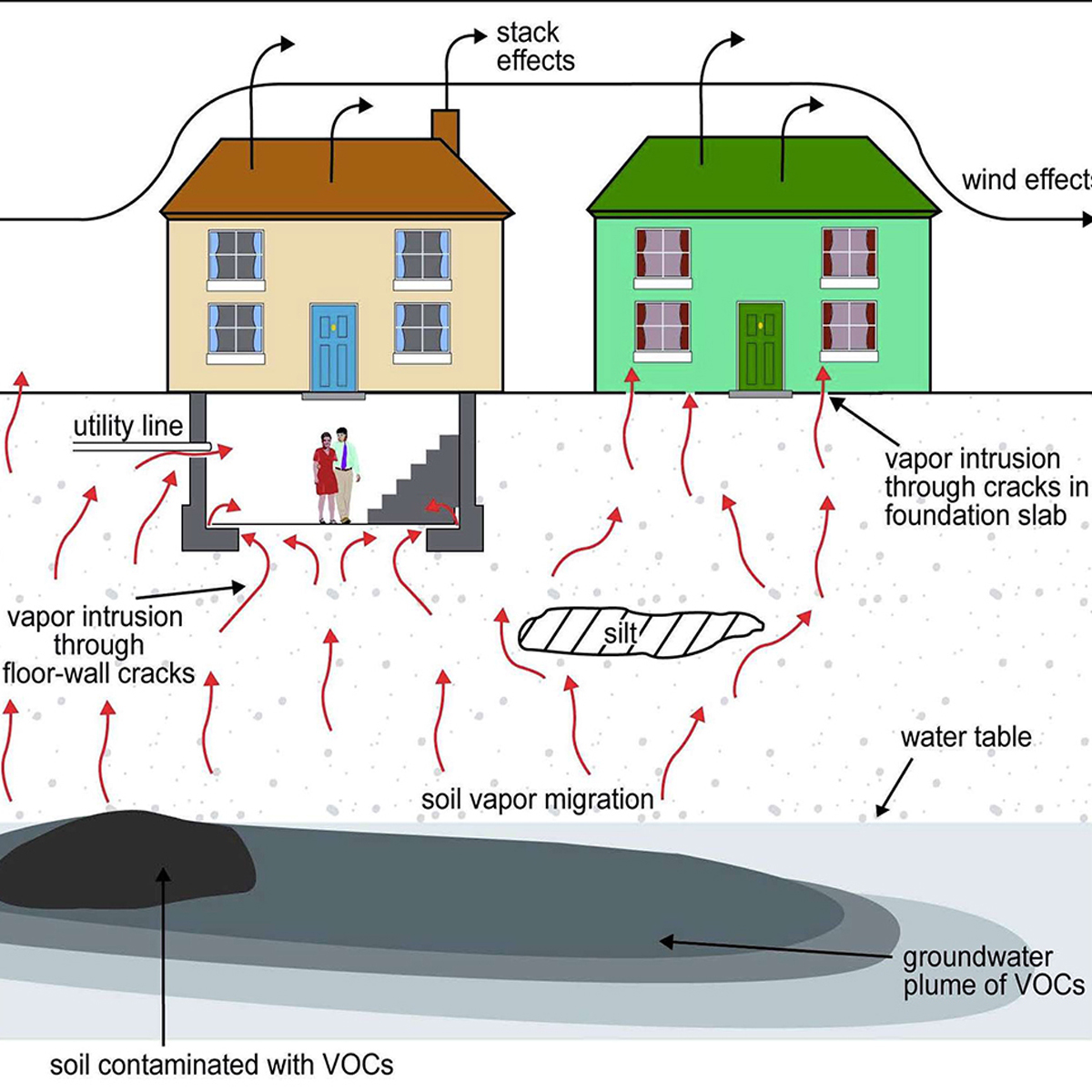

Soil Vapor and Vapor Intrusion
Soil vapor is the gas that is present in the open space in the soil above the water table. When there has been pollution that has reached the groundwater table, these pollutants will form a plum and migrate from the site of pollution to neighboring areas. As the pollutants volatilize they will enter the soil gas and migrate upward through the soil. Vapor Intrusion is the migration of these volatile volatile chemicals from contaminated soil or groundwater into a building that is above the plum. The chemicals then become part of the indoor air that people breathe.
The chemicals tested are primarily volatile organic compounds that are associated with gasoline station operations or dry cleaners. While the chemicals tested in the soil vapor samples and the indoor air samples are often the same, their concentrations can be very different.
Soil Gas Testing
The soil gas samples are collected from probes driven in the soil at various depths. This is all put together in the Sampling and Analysis Plan (SAP). Some considerations in planning that involve the laboratory are:
-
Compounds and Detection Limits needed for project. There are different considerations for residential and commercial.
-
Canisters are generally used if samples are being sent to a laboratory because of holding time considerations. If canisters are used then "soil gas sampler" with a vacuum gauge and flow regulator need to be used.
Vapor Intrusion Testing
Indoor Air samples are used to evaluate the exposure inside of buildings. These samples are best collected in a canister equipped with a flow regulator to integrate the sample over a period of time. In order to reach the detection limits required for some of compounds the EPA TO-15 selected ion monitoring (SIM) method must be used. This method is capable of measuring down to single digit part per trillion (pptv). EAS was a pioneer in developing the EPA TO-15 SIM method back in the early 1980's, and has been using this method for measuring low level VOC compounds in indoor air.